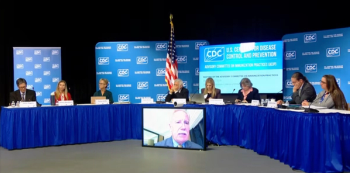
FDA Approves Teflaro for Bacterial Infections
The Food and Drug Administration (FDA) announces it has approved Teflaro (ceftaroline fosamil), an injectable antibiotic to treat adults with community-acquired bacterial pneumonia (CABP) and acute bacterial skin and skin structure infections (ABSSSI), including methicillin-resistant Staphylococcus aureus (MRSA).
Teflaro is an antibacterial agent in a class of drugs known as cephalosporins, which act by interfering with the bacterial cell wall. CABP is a bacterial infection that develops in the lungs of patients who are exposed to the bacteria in their normal environment, and not in the hospital. ABSSSI is a bacterial infection of skin and skin structures that requires antibiotic treatment and may require surgical treatment. MRSA is a type of staph bacteria that is resistant to certain antibiotics. These antibiotics include methicillin and other more common antibiotics such as oxacillin, penicillin, and amoxicillin. In the community, most MRSA infections are skin infections. Severe or potentially life-threatening MRSA infections occur most frequently among patients in contact with health care settings, according to the Centers for Disease Control and Prevention.
"These are serious and potentially life-threatening infections for which new treatment options are needed," says Edward Cox, MD, MPH, director of the Office of Antimicrobial Products in FDA's Center for Drug Evaluation and Research. "FDA is committed to facilitating new antibiotic drug development."
The safety and effectiveness of Teflaro was evaluated in four, Phase 3 clinical trials in patients ages 18 years and older (two each in CABP and in ABSSSI). In the CABP trials, the comparator antibacterial treatment was Rocephin (ceftriaxone) and in the ABSSSI trials, the comparator antibacterial treatment was Vancocin (vancomycin) plus Azactam (aztreonam).
In the CABP trials, 1,231 adult patients received Teflaro or Rocephin. Clinical response based on improvement in signs and symptoms of pneumonia on Day 4 after starting therapy served as the key analysis endpoint. In both trials, the effectiveness of Teflaro was comparable to Rocephin.
In the ABSSSI trials, 1,396 adult patients received Teflaro or Vancocin plus Azactam. Clinical response, including cessation of spread of the lesion and absence of fever on Day 3, served as the key analysis endpoint. In both trials, Teflaro was comparable to Vancocin plus Azactam.
The most commonly reported side effects in patients treated with Teflaro included diarrhea, nausea and rash. Teflaro should not be used in patients with sensitivities to cephalosporin antibiotics.
Teflaro is marketed by New York City-based Forest Laboratories.
Newsletter
Stay prepared and protected with Infection Control Today's newsletter, delivering essential updates, best practices, and expert insights for infection preventionists.






